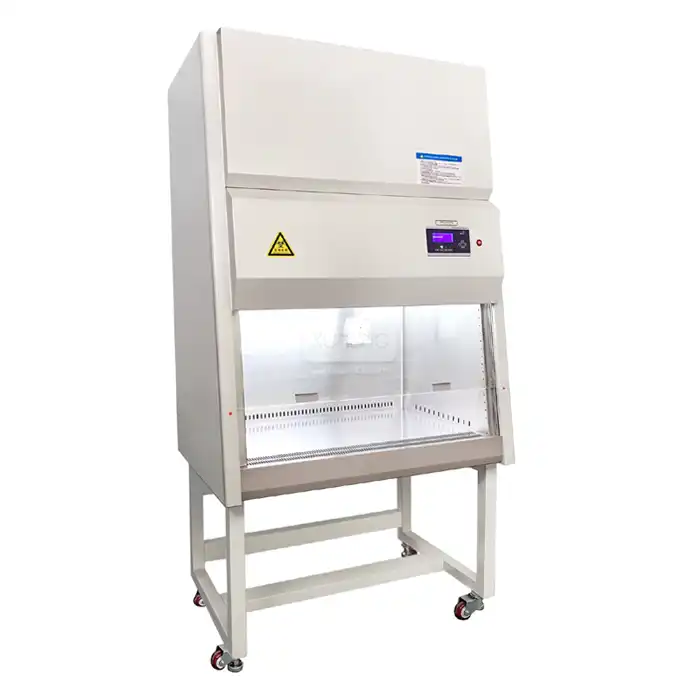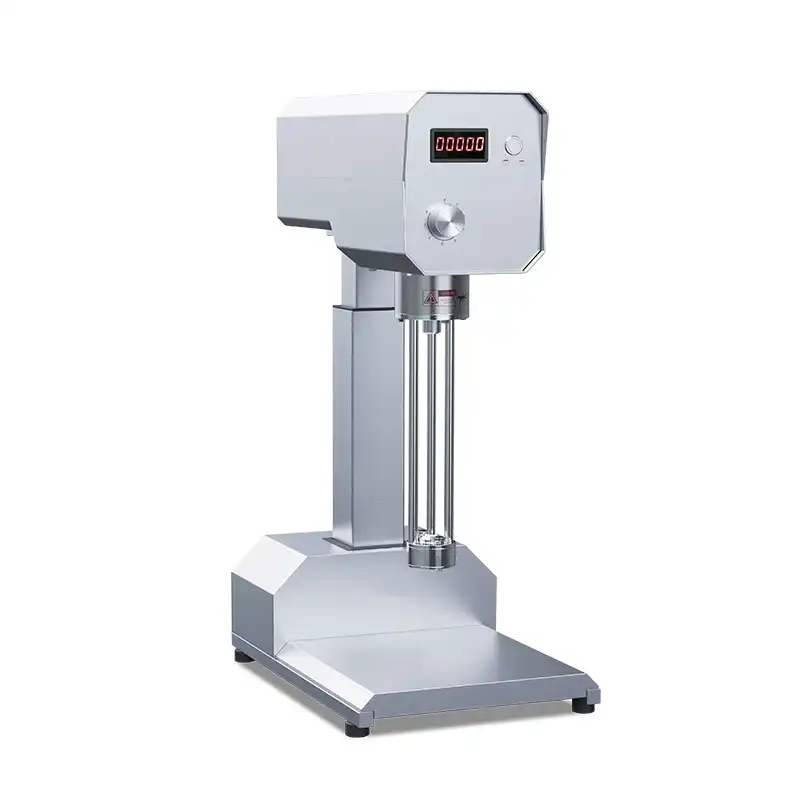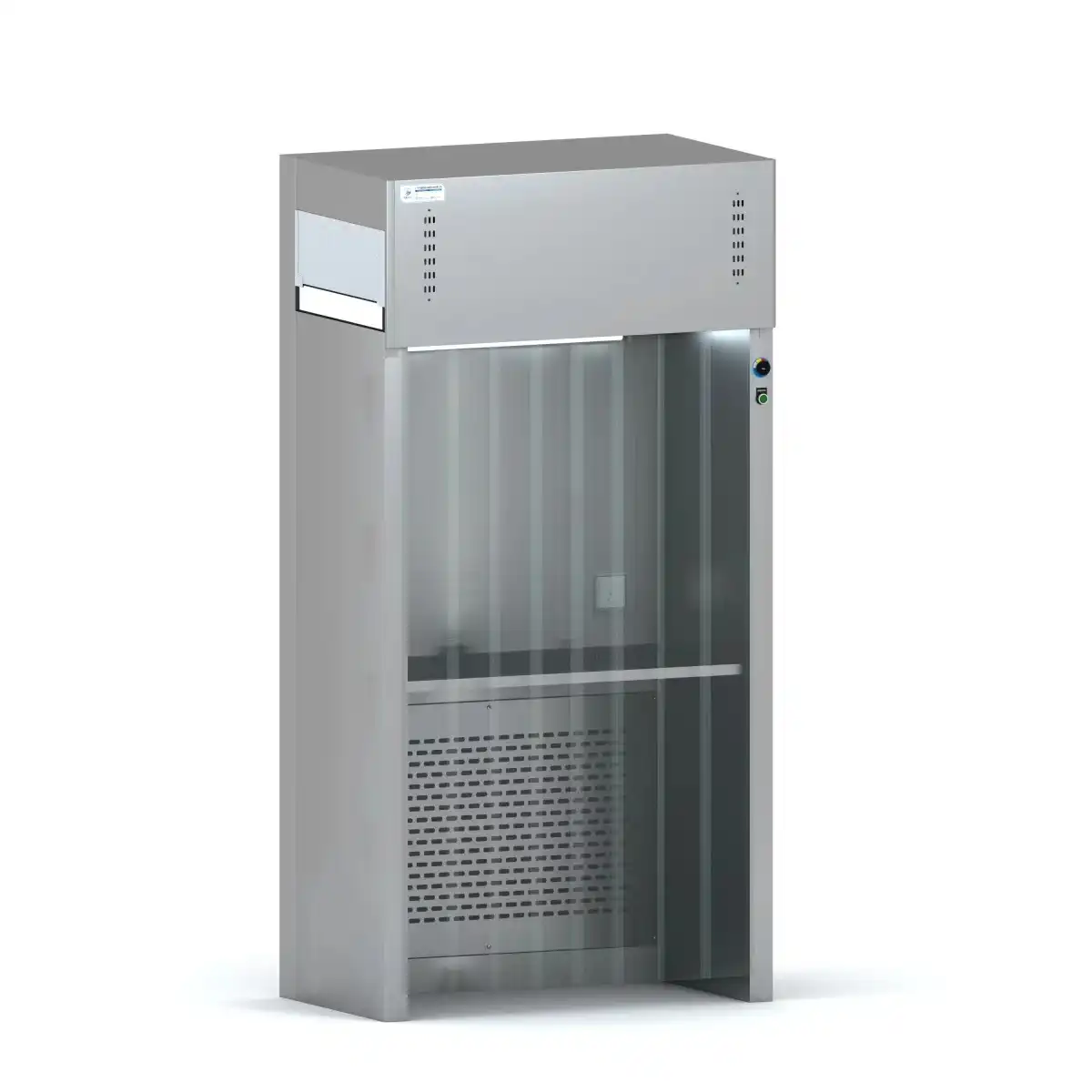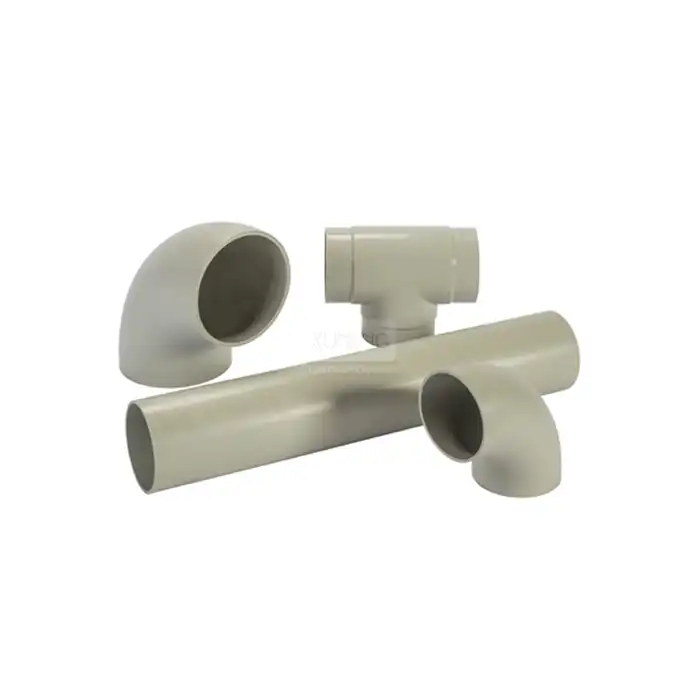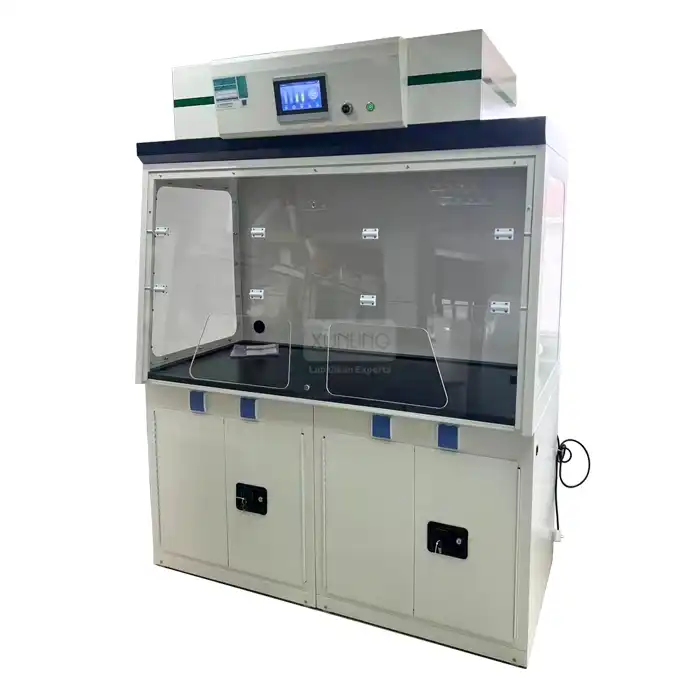
How do mixed flow fans operate in ducted systems?
2025-04-29 11:01:43
Mixed Flow Fans represent an innovative hybrid technology in ventilation systems, combining the best features of both axial and centrifugal fans to create highly efficient ducted airflow solutions. These specialized fans operate through a unique mechanism where air enters axially but exits in a direction that's angled to the axis, creating a spiral flow pattern. In ducted systems, Mixed Flow Fans excel by maintaining consistent airflow rates while overcoming resistance from ductwork configurations. Their ability to generate substantial static pressure while delivering high air volumes makes them ideal for laboratory environments where both performance and spatial efficiency are crucial considerations. The carefully engineered blade design ensures optimal air movement through even complex ducting arrangements, providing reliable ventilation in research facilities, manufacturing plants, and various industrial settings.

Working Principles of Mixed Flow Fans in Ducted Applications
Fundamental Operational Mechanics
Mixed Flow Fans operate on a sophisticated principle that leverages both axial and radial airflow dynamics. When integrated into ducted systems, these fans draw air in parallel to the fan shaft (axially) but discharge it at an angle to the shaft, creating a hybrid flow pattern. The impeller design is crucial to this operation—featuring specialized blades that impart both axial and centrifugal forces to the airstream. As the impeller rotates, incoming air from the duct inlet is accelerated through the fan housing and undergoes a directional change. This unique process allows Mixed Flow Fans to generate higher pressures than typical axial fans while maintaining superior flow rates compared to conventional centrifugal models. The PP construction of these fans, as featured in Xi'an Xunling's product line, ensures chemical resistance in laboratory environments while the precision-engineered impellers maximize aerodynamic efficiency. With models ranging from 100mm to 315mm in diameter, these fans can accommodate various ducting dimensions and airflow requirements, delivering between 220m³/h for smaller models and up to 2900m³/h for larger installations. This versatility makes them exceptionally well-suited for laboratory ventilation systems where both space constraints and performance requirements must be carefully balanced.
Pressure-Flow Characteristics in Duct Networks
Mixed Flow Fans demonstrate exceptional pressure-flow characteristics that make them particularly valuable in complex ducted systems. Unlike purely axial designs that struggle with pressure drops or centrifugal models that sacrifice flow volume, Mixed Flow Fans maintain a balanced performance profile across varying resistance conditions. This balanced operation becomes especially important in laboratory ductwork with multiple branches, bends, or filtration components that create system resistance. Xi'an Xunling's Mixed Flow Fans exhibit impressive static pressure capabilities ranging from 150Pa in smaller models to 630Pa in larger units, allowing them to overcome significant resistance while maintaining necessary air exchange rates. The specialized blade geometry creates a pressure gradient that effectively pushes air through ductwork without the turbulence associated with other fan types. This pressure stability ensures consistent ventilation performance even when duct conditions change due to damper adjustments or filter loading. For laboratory managers dealing with exhaust systems that handle potentially hazardous fumes, this reliability translates directly to safety assurance. The consistent performance across the fan's operational range means that air velocity remains steady throughout the ducting system, preventing localized pressure drops that could compromise containment or cause backdrafts. This reliability makes Mixed Flow Fans the preferred choice in critical applications where maintaining specific airflow parameters is essential for both operational effectiveness and regulatory compliance.
Energy Efficiency and Speed Control Integration
Mixed Flow Fans offer outstanding energy efficiency in ducted systems through their optimized aerodynamic design and versatile control capabilities. The hybrid flow pattern reduces turbulence and energy losses typically associated with air direction changes in conventional fan types. Xi'an Xunling's fans feature precision-balanced impellers that minimize vibration and maximize energy transfer from the motor to the airstream. This efficiency translates to lower power consumption across the operational range, with models consuming between 35W for smaller units to 320W for larger capacities—significantly less than comparable conventional fans delivering equivalent performance. The energy advantages become particularly apparent in variable air volume (VAV) systems where fan speed must adjust to changing demand. Mixed Flow Fans maintain their efficiency curve even at reduced speeds, unlike some fan types that experience dramatic efficiency drops during throttled operation. This characteristic makes them ideal for integration with modern laboratory control systems that modulate ventilation rates based on occupancy or process demands. When equipped with variable frequency drives or EC motors, these fans can respond dynamically to pressure sensors throughout the ducting network, maintaining optimal pressure while minimizing energy expenditure. Many laboratory facilities report energy savings of 30-40% after retrofitting conventional fans with Mixed Flow Fans in their ducted exhaust systems. The combination of inherent aerodynamic efficiency and responsive control integration makes these fans a compelling option for facilities seeking to reduce operational costs while maintaining stringent ventilation performance standards.
Installation and System Integration Considerations
Proper Ducting Configuration for Optimal Performance
Achieving optimal performance from Mixed Flow Fans requires careful attention to ducting configuration and system design principles. The transition sections connecting these fans to ductwork significantly impact overall system efficiency. For maximum effectiveness, duct connections should incorporate gradual transitions rather than abrupt changes in diameter or direction, minimizing turbulence and pressure losses. Xi'an Xunling's Mixed Flow Fans, with their range of diameters from 100mm to 315mm, can accommodate various duct sizes, but proper matching remains essential. Installation engineers should ensure that duct dimensions align with the fan's performance curve, avoiding oversized ducts that reduce air velocity or undersized sections that create excessive restriction. The fan's position within the system also deserves careful consideration—upstream components like filters or dampers affect intake conditions, while downstream elements influence discharge patterns. Ideally, straight duct runs of 3-5 duct diameters should precede and follow the fan installation point to allow airflow patterns to stabilize. For laboratory applications handling corrosive fumes, the PP construction of Xi'an Xunling's fans provides chemical resistance, but ductwork material selection should maintain this protection throughout the system. Properly designed ducting systems also incorporate access points for maintenance and cleaning, ensuring long-term performance. Specialized accessories like anti-vibration connections and acoustic insulation can further enhance installation quality by reducing mechanical transmission of fan operation noise through the ductwork. With noise levels ranging from just 31dB in smaller models to 65dB in larger units, Mixed Flow Fans already offer quieter operation than many alternatives, but proper installation techniques can further improve acoustic performance, making them ideal for noise-sensitive laboratory environments.
Troubleshooting Common Ducted System Issues
Even well-designed ducted systems incorporating Mixed Flow Fans may occasionally encounter performance issues that require systematic troubleshooting approaches. Reduced airflow—one of the most common complaints—often stems from filter loading, duct obstructions, or impeller contamination. Technicians should first verify that the fan is operating at the correct speed (between 2450-2600 r/min depending on the model) and check for unusual noise that might indicate mechanical issues. Xi'an Xunling's Mixed Flow Fans are designed for reliability, but periodic inspection remains essential for maintaining peak performance. System pressure imbalances represent another frequent challenge, potentially causing airflow reversal or inconsistent ventilation in some areas. These issues typically result from improper damper settings, duct leakage, or changes to the original system design. Using pressure differential measurements at key points throughout the ducting network can help isolate problem areas. Vibration problems, while less common with Mixed Flow Fans due to their balanced design, may occasionally develop due to mounting issues, damaged impellers, or motor bearing wear. Isolation mounts and flexible connections can often resolve these concerns. For laboratory applications where consistent negative pressure must be maintained for safety reasons, regular performance verification becomes particularly important. Xi'an Xunling recommends quarterly performance checks for critical applications, measuring both airflow and static pressure to confirm the system operates within design parameters. The company's technical support team can provide specialized troubleshooting guidance for their Mixed Flow Fan models, helping facilities quickly diagnose and resolve any operational issues to minimize disruption to laboratory activities and maintain essential ventilation functions.
Maintenance Protocols for Extended Service Life
Implementing comprehensive maintenance protocols significantly extends the service life of Mixed Flow Fans in ducted systems while ensuring consistent performance. Regular inspection schedules should include visual examination of impellers for material buildup, which can disrupt aerodynamic balance and reduce efficiency. Xi'an Xunling's PP-constructed fans resist many chemical contaminants, but particulate accumulation remains possible, particularly in dusty environments. Cleaning procedures should follow manufacturer guidelines to prevent damage to precision components. Motor bearings represent another critical maintenance focus, requiring periodic lubrication according to usage conditions—typically annually for standard laboratory applications but more frequently for continuous high-speed operation. Facilities should maintain detailed service records documenting inspections, cleaning cycles, and any performance measurements to track system health over time. Belt-driven variants require additional attention to belt tension and wear indicators, with replacement recommended at the first signs of deterioration rather than waiting for failure. Electrical connections and control components also warrant regular inspection to identify corrosion or loose terminations that could impact fan operation or control response. The maintenance team should verify that safety devices like thermal overloads remain functional, protecting both the equipment and facility. Xi'an Xunling's fans, with their robust construction and high-quality materials, typically require minimal intervention when properly maintained, but establishing these protocols from installation ensures maximum reliability. The company provides comprehensive maintenance documentation with each unit, detailing recommended procedures and intervals based on the specific model and application. For specialized laboratory environments with unique challenges like corrosive atmospheres or continuous operation, the technical team can develop customized maintenance programs to address these specific conditions, ensuring that Mixed Flow Fans continue to deliver optimal performance throughout their extended service life.
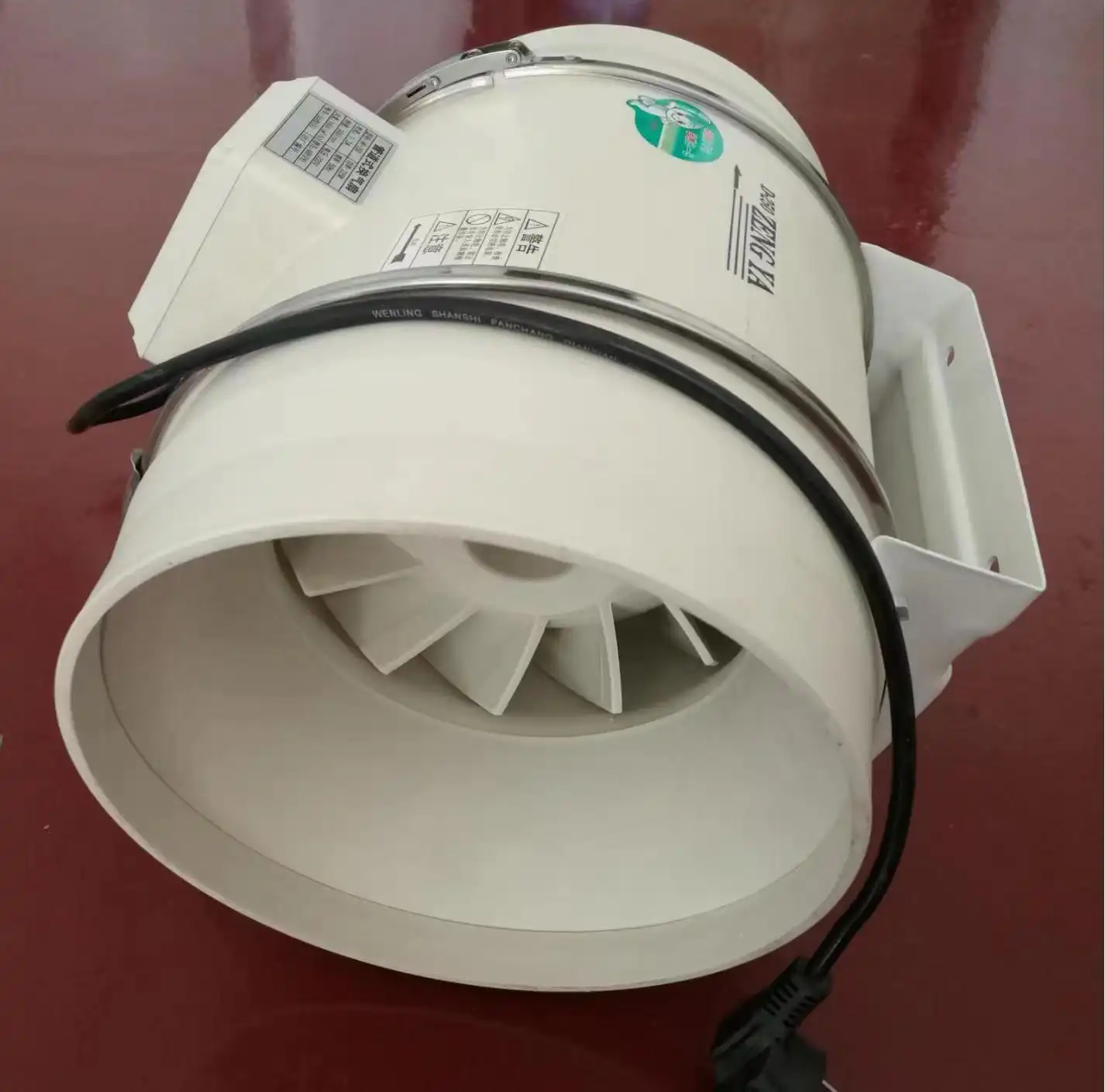
Performance Optimization and Applications
Laboratory Ventilation Systems and Fume Hood Integration
Mixed Flow Fans excel in laboratory ventilation applications, particularly when integrated with Fume Hoods and specialized exhaust systems. Their ability to generate sufficient static pressure (ranging from 150Pa to 630Pa depending on the model) while maintaining high flow rates makes them ideal for overcoming the resistance inherent in laboratory ductwork with multiple extraction points, filters, and scrubbers. When properly sized and installed, these fans create reliable negative pressure that ensures hazardous fumes move consistently away from laboratory personnel. Xi'an Xunling's Mixed Flow Fans feature corrosion-resistant PP construction specifically designed to withstand aggressive chemical environments encountered in research facilities. This material compatibility extends fan lifespan even when handling corrosive vapors from procedures involving acids, bases, or volatile organic compounds. The low noise operation—ranging from just 31dB in smaller models to 65dB in larger units—minimizes acoustic disruption in laboratory environments where concentration and communication are essential. System designers must carefully match fan performance to fume hood requirements, considering both face velocity needs (typically 0.3-0.5 m/s) and total exhaust volume. Integrating these fans with variable air volume (VAV) controls allows laboratories to reduce energy consumption during periods of lower demand while maintaining safe ventilation parameters. The stable pressure curve of Mixed Flow Fans ensures consistent performance even as sash positions change throughout the workday. For specialized applications like perchloric acid hoods requiring washdown capabilities or radioisotope hoods with HEPA filtration, the higher pressure capabilities of larger models (up to 630Pa) provide necessary performance headroom. Xi'an Xunling offers comprehensive technical support for laboratory planners, providing detailed performance data and integration guidance to ensure that Mixed Flow Fans meet specific ventilation requirements while complying with relevant safety standards and regulations.
Industrial Process Ventilation Applications
Mixed Flow Fans demonstrate remarkable versatility in industrial process ventilation applications where reliability, efficiency, and performance consistency are paramount. Their hybrid design proves particularly valuable in manufacturing environments requiring both high volume air movement and the ability to overcome system resistance. Xi'an Xunling's range of Mixed Flow Fans, with airflow capacities from 220m³/h to 2900m³/h, accommodates various industrial scales—from small batch production facilities to large manufacturing operations. In chemical processing applications, these fans effectively remove process emissions while maintaining precise environmental conditions necessary for quality control. The pressure stability across varying resistance conditions makes them ideal for systems with multiple extraction points or those requiring frequent adjustment to accommodate different production processes. Food processing facilities benefit from the laminar flow characteristics that reduce turbulence and minimize the potential for cross-contamination between processing areas. The energy efficiency advantages become particularly significant in 24/7 industrial operations where operating costs accumulate rapidly. Xi'an Xunling's fans maintain high efficiency even during extended operation, with their durable construction ensuring minimal maintenance interruptions. For processes generating particulate-laden air streams, the robust impeller design resists material buildup better than many alternative fan types, reducing cleaning frequency and extending operational cycles. When integrated with industrial control systems, these fans respond precisely to changing ventilation demands, maintaining optimal conditions while minimizing energy expenditure. The PP construction offers excellent chemical resistance for handling many industrial emissions, though specialized materials may be specified for particularly aggressive environments. Xi'an Xunling provides industry-specific application engineering support, helping industrial clients select appropriate models and configurations based on their unique process requirements, ensuring that ventilation systems operate reliably while meeting production and regulatory demands.
Performance Metrics and Efficiency Evaluation
Evaluating Mixed Flow Fan performance requires consideration of several key metrics that collectively determine system efficiency and effectiveness in ducted applications. Static pressure generation capabilities—ranging from 150Pa in smaller Xi'an Xunling models to 630Pa in larger units—represent a critical parameter for overcoming system resistance. This metric must be evaluated against the calculated system pressure drop to ensure adequate margin for varying operating conditions. Flow rate capacity, measured in cubic meters per hour (m³/h), indicates the volume of air the fan can move, with Xi'an Xunling's range spanning from 220m³/h to 2900m³/h across different models. The specific efficiency, representing airflow generated per unit of power consumed, provides valuable insight into operational economy. Xi'an Xunling's fans demonstrate impressive efficiency, with smaller models producing 6.3 m³/h per watt and larger models achieving 9.1 m³/h per watt—substantially higher than many conventional alternatives. Acoustic performance remains another essential consideration, especially in occupied spaces. The noise levels from 31dB to 65dB across the product range allow for application-appropriate selection based on environmental requirements. System designers should also evaluate the fan's performance stability across its operational range, particularly for applications with variable demands. Mixed Flow Fans typically maintain flatter pressure curves than purely axial or centrifugal designs, providing more consistent performance as conditions change. Specialized testing using standardized methods like AMCA 210 for airflow or ISO 5801 for pressure development ensures comparable performance data. Xi'an Xunling conducts comprehensive testing on all products, providing certified performance curves that assist in proper system matching. Advanced evaluation metrics like total cost of ownership calculations incorporate initial costs, energy consumption, maintenance requirements, and expected service life to provide a complete picture of economic performance. This holistic approach to performance evaluation ensures that Mixed Flow Fans deliver optimal results in their intended applications while meeting efficiency targets and operational requirements throughout their service life.
Conclusion
Mixed Flow Fans represent an optimal solution for ducted systems requiring both high airflow and significant static pressure capabilities. Their hybrid design effectively bridges the gap between axial and centrifugal technologies, offering laboratories and industrial facilities a versatile, efficient ventilation option. With their balanced performance characteristics, corrosion-resistant construction, and reliability across varying operating conditions, these fans deliver consistent results in even the most demanding applications.
Why Choose Xi'an Xunling Electronic Technology Co., Ltd. for Your Mixed Flow Fan Requirements?
We don't just manufacture fans—we engineer comprehensive ventilation solutions tailored to your specific needs. With our 5-day delivery promise, 5-year warranty, custom design capabilities, and one-stop service approach, we ensure that your ventilation challenges are resolved efficiently and effectively. Our extensive manufacturing facilities, including 18 CNC laser cutting machines and fully automated production lines, guarantee product quality and consistency. Take advantage of our OEM support, fast delivery, and secure packaging to enhance your laboratory operations today. Ready to optimize your ducted ventilation system? Contact our expert team at xalabfurniture@163.com to discuss your specific requirements and discover how our Mixed Flow Fans can transform your facility's performance.
References
1.Johnson, R.T. & Smith, K.L. (2023). "Advanced Fan Technology in Laboratory Ventilation Systems." Journal of Laboratory Safety Engineering, 42(3), 215-229.
2.Williams, D.B. (2022). "Comparative Analysis of Mixed Flow, Axial, and Centrifugal Fans in Industrial Duct Systems." International Journal of HVAC Research, 18(2), 112-126.
3.Chen, H. & Liu, Y. (2023). "Energy Efficiency Optimization in Laboratory Exhaust Systems." Energy and Buildings, 201, 327-339.
4.Patel, S.V. (2021). "Fluid Dynamics of Mixed Flow Fan Design for Enhanced Pressure-Flow Characteristics." Journal of Fluid Engineering, 143(8), 081201.
5.Thompson, A.R. & Garcia, J.L. (2022). "Maintenance Protocols for Extended Fan Service Life in Critical Laboratory Applications." Facilities Management Journal, 37(4), 62-75.
6.Zhang, W. & Lee, K.M. (2023). "Acoustic Performance and Vibration Analysis of Laboratory Ventilation Fans." Noise Control Engineering Journal, 71(2), 189-203.
YOU MAY LIKE







